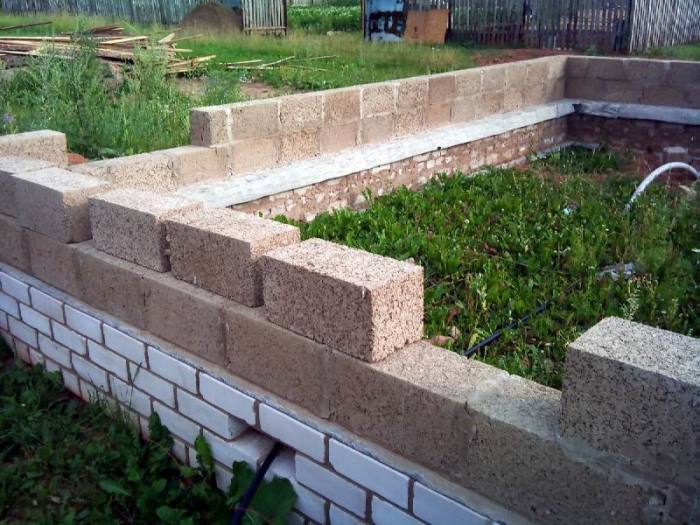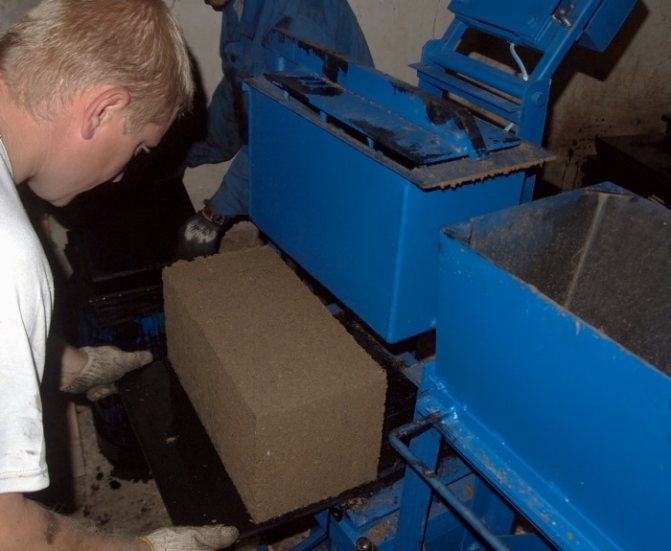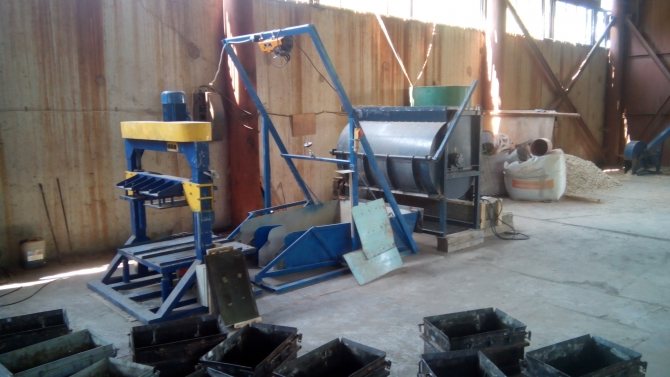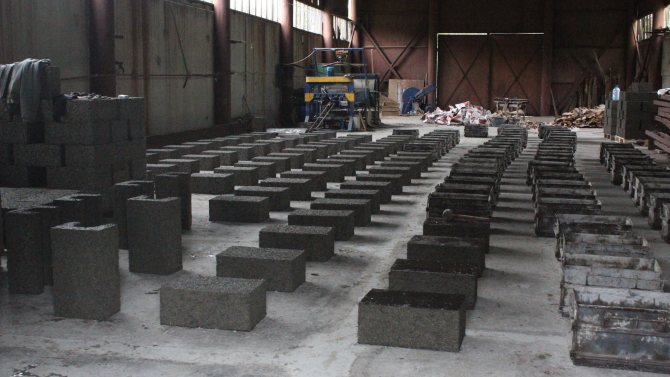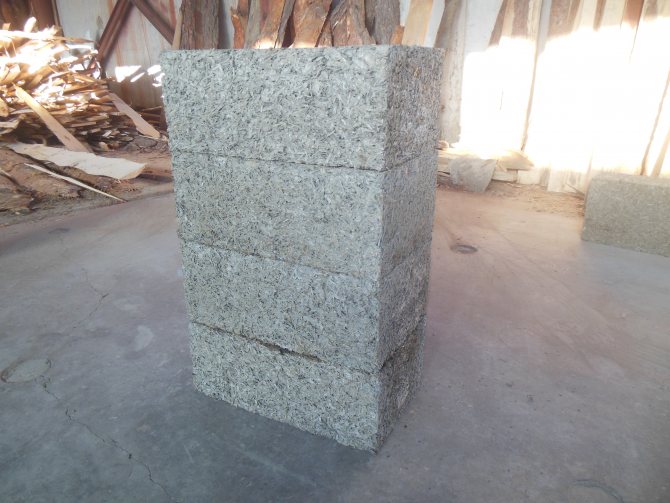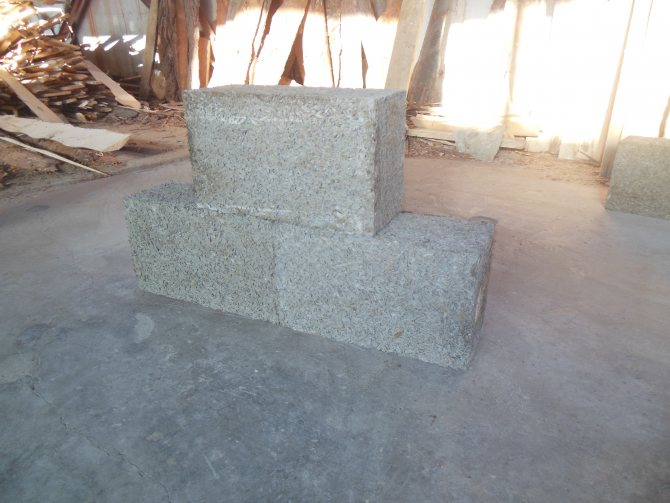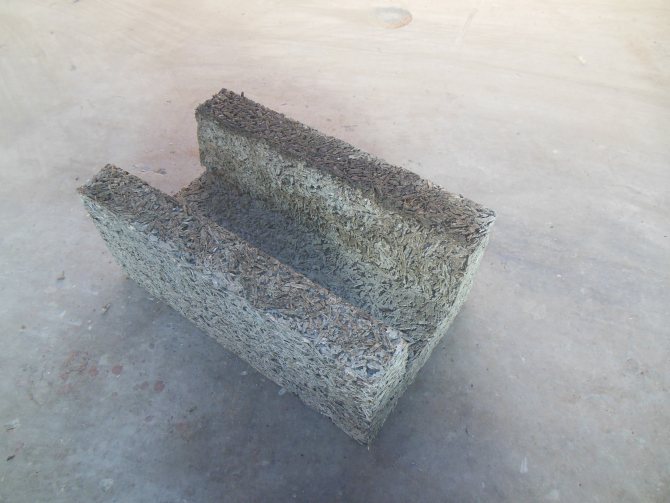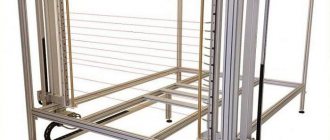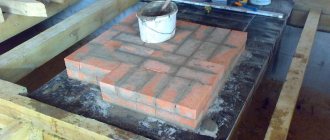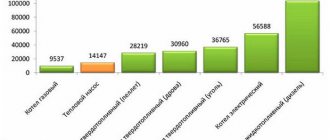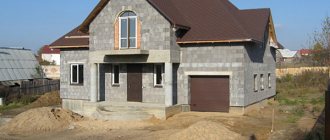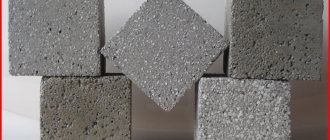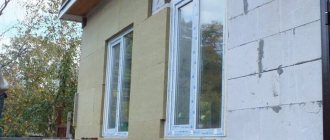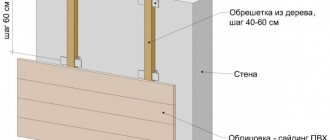Nomenclature of monolithic wood concrete
The nomenclature of monolithic wood concrete is the same as that of block wood concrete - there are 2 types:
- Constructional. Has a density of 500 to 850 kg / cu. m. Corresponds to the strength class B1, B1.5, B2, B2.5. They are used for the construction of load-bearing walls and partitions of buildings up to 2 floors.
- Heat insulating. Its density is from 300 to 500 kg / cubic meter. m. Strength class - B0.35, B0.5, B0.75. They are used for filling sinuses and inter-wall voids for thermal insulation and sound insulation.
The strength of the poured wood concrete depends on the grade of cement used and the quality of the compaction of the mixture. With insufficient strength, reinforcement of wood concrete is performed.
Construction of houses
94 votes
+
Voice for!
—
Against!
The step-by-step technology for the manufacture of wood concrete foresees the preparation of the base, the determination of the components and the composition of the block material. In this article, we will consider the features of do-it-yourself production using the necessary equipment, calculating mass and pouring.
Table of contents:
- Advantages and disadvantages of wood concrete
- Wood concrete production technology
- Preparing the foundation for work
- Components and composition of wood concrete
- Manufacturing process and principles
- Equipment: application in practice
- Block forms for wood concrete
- DIY manufacturing process
- Expert advice on DIY block making
Advantages and disadvantages of wood concrete
For many builders, wood concrete blocks are a valuable and high-quality material for building houses. The main feature of the thermal insulation properties allows the production of floor sheets from the solution. Manufacturing technology and principles of holding and drying blocks provide some advantages to wood concrete:
1. The strength of the material is 600-650 kg / m3, which in terms of the component structure is not inferior to any other building material. The main feature is plasticity, which is formed as a result of the use of wood, which reinforces the blocks with high quality. Thus, the wood concrete does not crack under the weight of other materials, but can only slightly deform while maintaining the overall structure of the structure.

2. Resistance to low temperatures, which is very important in the process of building a house and its operation. The fact is that if the building heats up and freezes several times, this will not affect the quality of the material. In fact, an arbolite house can last at least 50 years in any weather conditions. Structures made of foam blocks do not have such properties, because with constant freezing, they will quickly lose their functionality.
3. Arbolite does not lend itself to the effects of carbon dioxide, so do not worry about carbonization of blocks, because their structure will not allow the material to turn into chalk.
4. The thermal conductivity of the blocks indicates the popularity of the material. Comparing the indicators, it is worth noting that a wood concrete wall of 30 cm is equal to 1 meter of brickwork thickness. The structure of the material allows you to keep warm indoors even in the coldest winters, which is very economical during construction.
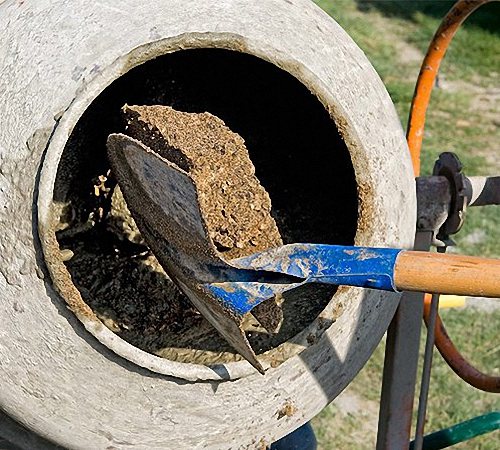

5. Soundproof properties indicate a high absorption coefficient of wood concrete, which ranges from 0.7 to 0.6. For comparison, wood has indicators of 0.06 -0.1, and brick is slightly larger, about 0.04-0.06.
6. Lightness of the material, which saves money for pouring the foundation.
7. Arbolite is an environmentally friendly and durable building material, which determines the component composition of the blocks. After the construction of the house, it does not form mold and mildew on the walls.
8. The material is safe, so it will not flammable.
9. Arbolite blocks are easy to use in construction work, because you can easily hammer in nails, drill a hole, use screws and so on. The external structure of the material allows you to cover it with plaster without the use of special nets and additional insulation.
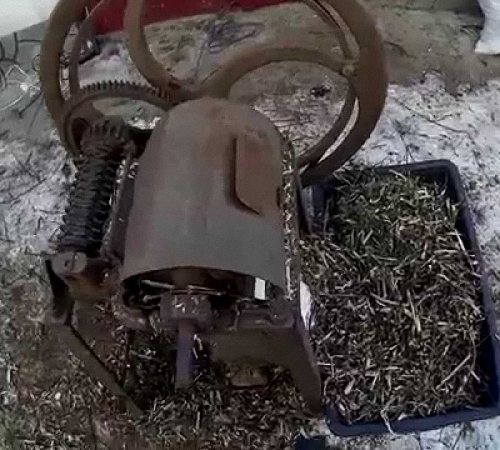

We have considered the advantages of wood concrete blocks, but for a complete recreation of the picture about this building material, we will give some disadvantages:
1. The wall panel may not stand out with precise geometric parameters, from which to restore the evenness of the wall, clapboard, siding or drywall is used, and everything is separated from above with plaster.
2. Blocks are not a cheap building material, because the manufacture of wood chips for wood concrete requires some costs. Making calculations in comparison with aerated concrete, this building material will cost only 10-15 percent more, which does not form a full advantage.
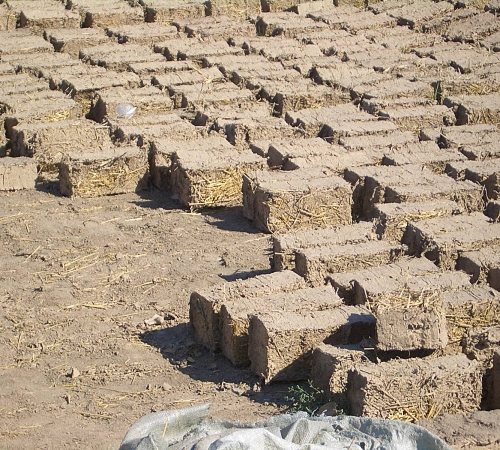

Wood concrete production technology
The manufacture of wood concrete requires adherence to production technologies with the calculation of the composition and volume for one block. Arbolite blocks are a building material with a simple component composition, which includes wood, water, sawdust, cement and other items.
The main basis for production is considered to be wood chips. The component part of the wood concrete block determines its strength and resistance to damage, which is calculated at a higher level than that of foam or aerated blocks. Home production is not difficult to carry out, but it is necessary to adhere to the distribution of the mass of the object and follow the instructions.
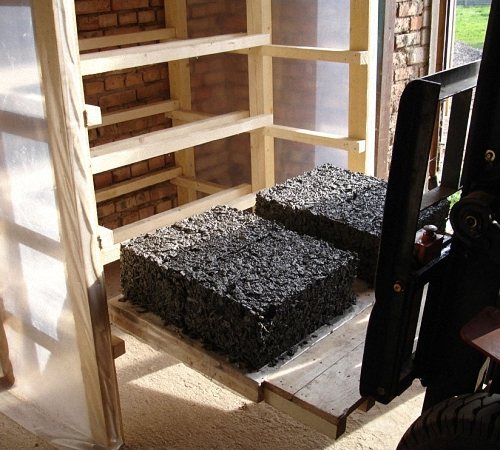

Preparing the foundation for work
The main component for making wood chips for wood concrete is the ratio of the proportions of shavings and sawdust - 1: 2 or 1: 1. All items are well dried, for which they are placed in fresh air for 3 - 4 months, from time to time processing with lime and turning over.
Approximately 1 cubic meter of the product will require about 200 liters of 15 percent lime. All the chips are placed in them for four days and mixed 2 to 4 times a day. All work is carried out in order to remove sugar from wood, which can provoke rotting of blocks. Wood chips are purchased ready-made, however, with the help of wood chips, you can do it yourself.
Components and composition of wood concrete
The component composition of wood concrete is the most important stage in the production technology and requires a careful ratio of all materials. When making blocks, it is important to monitor the quality and variety of purchased materials, which determine the finished building material. After the manufacturing process, the following materials are added to the chips, such as:
- slaked lime;
- soluble liquid glass;
- Portland cement;
- potassium chloride;
- aluminum and calcium sulfate.
The production of wood concrete in proportions is presented in Table 1. It is worth considering that for all components, the mass is calculated for four percent of the proportion of cement. This arrangement helps to preserve the fire resistance of the object and imparts plasticity.


Table 1. Composition of wood concrete by volume
| Arbolite grade | Cement (M400) | Lime quantity | Amount of sand | Sawdust quantity | Received density (kg / m3) |
| 5 | 1 | 1,5 | — | 15 | 300-400 |
| 10 | 1 | 1 | 1,5 | 12 | 600-700 |
| 15 | 1 | 0,5 | 2,5 | 9 | 900-1000 |
| 25 | 1 | — | 3 | 6 | 1200-1300 |
Manufacturing process and principles
The optimal block parameters for the wood concrete production technology are 25x25x50 centimeters. The specified dimensions are convenient for laying the walls of houses, as well as in the process of industry. Pouring the block consists of three rows of the mixture and wood concrete; after each stage, it is necessary to compact the solution with a hammer trimmed with tin.
The excess mass is rolled up with the help of a spatula. The block is kept at a temperature of 18 degrees Celsius in open air.After a day, the wood concrete is tapped out of the mold onto a flat surface, where it is held together for 10 days.
Equipment: application in practice
For production, different supplies are required, for example, machines for the manufacture of wood concrete, which are selected in accordance with the volume of production and the amount of raw materials. The industrial process technology must meet the requirements and criteria of SN 549-82 and GOST 19222-84. Conifers are the main material for production. The crushing of wood is carried out using chippers, such as PPM-5, DU-2, and more meticulous crushing is carried out using the DM-1 equipment.
Arbolite mixture is prepared with mixers and solvents of various cyclic effects on the material. They bring large volumes of the processed mixture to the molds using a device as concrete distributors or kubels. The lifting or lowering of the machine must be carried out with the parameters 15o for the upper rise and 10o for the lower, and the speed of the equipment is calculated in 1 m / s. The wood concrete mixture is poured into molds at a height of up to 1 meter.


The mortar is compacted with the assistance of a vibrating machine or manual ramming. To produce a small number of blocks, you need to use a mini-machine. Making wood concrete with your own hands does not present any particular difficulties, however, at industrial facilities, special equipment for mixing and making blocks is used. At some factories there are thermal chambers with IR radiation or heating elements, which allows you to determine the desired temperature for drying blocks.
Block forms for wood concrete
There are different block forms for processing wood concrete, and the approximate values can be: 20x20x50 cm or 30x20x50 cm. Objects of other sizes are also produced, especially for the construction of ventilation systems, coatings, and so on. Forms can be purchased at hardware stores or you can prepare everything yourself. For this, boards with a thickness of 2 centimeters are used, which are fastened until a certain structure is formed. Externally, the form is finished with plywood or film.
Depending on the class, wood concrete blocks are used in low-rise construction for the construction of load-bearing walls, partitions, as well as for thermal insulation and sound insulation of structural elements of a building.
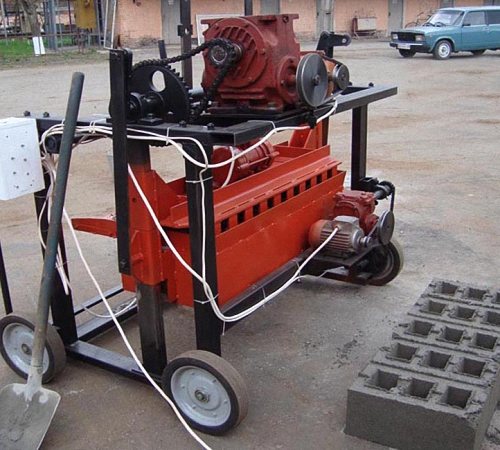

DIY manufacturing process
Having considered the manufacturing technology of the wood concrete composition, you can start doing the work yourself. To get started, you need some materials and equipment:
- special tray for the mixture;
- falling and vibrating table;
- a table with a shock-shaking effect;
- detachable forms and stands;
- metal pallet for molds.
It is very difficult to make wood concrete with your own hands without using the necessary tools, machines and equipment. As a rule, some devices will be required in production:
1. To obtain a high-quality solution, it is necessary to use a concrete mixer. Of course, in the process you can do everything with your own hands, however, you will have to spend a lot of time to obtain a solution of the required consistency.
2. For the formation of the structure of the blocks, it is important to acquire forms of the appropriate size. As a rule, wood concrete has a rectangular shape, and plastic molds are used in production.
3. With the help of the machine, you professionally grind wood chips.
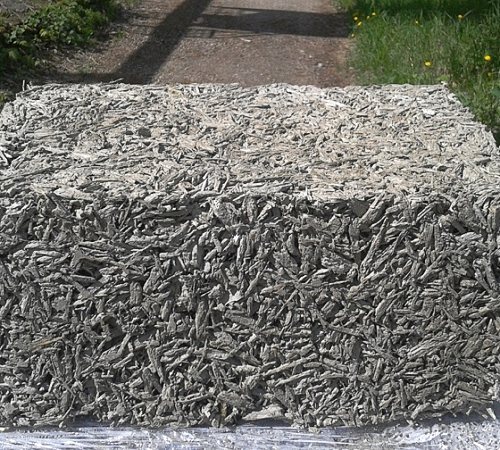

4. Using a press, you can get a good density of the material when tamping, while it is important to remove air from the consistency. A vibrating table is used as accessories.
5. The obligatory presence of a chamber for drying wood concrete, which will make it possible to turn it into a solid one-component structure.
6. At home, you will need a shovel to load the mixture into molds, and a reinforcing mesh is used to fasten the blocks.
In the presence of the above listed devices, it is possible to produce about 350 - 450 m3 of mortar per month per day.Installation space will require about 500 square meters, and electricity costs will go 15-45 kW / h. For an independent process, organic products are poured with water, as well as cement, until a homogeneous mixture is formed. All proportions and calculations are shown in table 1, the main thing is that the released mixture is free-flowing.
Before pouring the solution into the molds, they are coated on the inside with lime milk. After that, the product is carefully and carefully laid and tamped with special devices. The upper part of the block is leveled with a spatula or ruler and poured with a plaster solution on a layer of 2 centimeters.
After the formed wood concrete form, it will need to be carefully compacted using a wooden structure, upholstered with iron. Blocks that have stood and set for ten days at a temperature of 15 ° are considered strong and reliable. So that the wood concrete does not dry out, it is recommended to periodically water it with water.
The technology for making wood concrete with your own hands does not present a certain difficulty, and therefore all work is easy to carry out if you have the necessary tools and devices. Subject to the rules and criteria of production, the correct calculation of the components, the building material will turn out to be of high quality and durable for use.
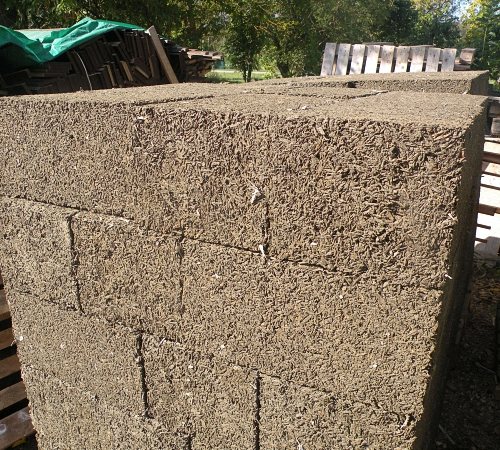

Expert advice on DIY block making
The recommendations of specialists for the production of wood concrete blocks are based on the practice of their use and application. In order to achieve high quality products, several factors must be followed. In production, it is recommended to use not only large chips, but also to use sawdust, wood shavings. Processing the consistency and squeezing sugar out of it allows you to avoid further swelling of the building material, which is not lowered when building a house.
During the manufacturing process, the solution should be thoroughly mixed so that all parts are in the cement. This is important for high-quality and durable bonding of wood and other materials in the block. In production, the addition of the following components, such as aluminum, slaked lime, and so on, remains equally important. The entire composition forms additional properties of wood concrete, for example, liquid glass does not allow the blocks to absorb moisture, and lime serves as an antiseptic.
Potassium chloride helps to destroy microorganisms and other substances that do not have a beneficial effect on the structure. When adding all the components, it is worth following the proportionality table so that the finished solution meets the requirements for the production of wood concrete blocks.
Cooking monolithic wood concrete: composition and proportions of the mixture
Monolithic wood concrete 80-90% consists of wood chips, as a filler, cement, water and chemical additives that accelerate the hardening of the solution and to eliminate the influence of wood sugars.
According to GOST, wood chips for wood concrete must have a certain size and shape. It is advisable to use coniferous woods, except for larch. Hardwoods contain slightly more woody poisons and can also be used.
Portland cement of grades M400, M500 is used as cement (European brands: CEM I 32.5, CEM I 42.5, CEM II / A 32.5, CEM II / A 42.5, CEM III 32.5).
Mineral Supplement Ratio
Various chemical components described in the article "Chemical additives for wood concrete" can be used as mineral additives to accelerate the hardening of the solution, treat wood chips, and increase the mobility of the solution. The most common and at the same time effective additives are calcium chloride (technical CaCl2), water glass, aluminum sulphate, lime-fluff.
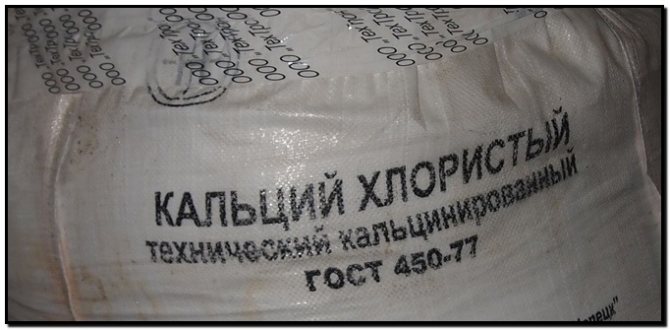

Accordingly, there are many recipes for the preparation of monolithic wood concrete. In some recipes, wood is prepared and processed, in others, a chemical component is added directly to the mixture.
According to one of the recipes, chips are soaked in lime (80 kg of lime per cube of wood), squeezed out. Then sprinkle with quicklime powder (80 kg) on top, mix, level, dry and add to the mixture. Thus, they get rid of wood sugars, which affect the strength of monolithic wood concrete.
Fumbling with wood chips, and even more so with such volumes for construction, is a rather time-consuming business that requires space for this process. Therefore, a quick option for the preparation of monolithic wood concrete would be the use of calcium chloride or aluminum sulfate (aluminum sulfate). In this case, the chips can not be processed, but it will be better if they lie in the open air, under the sun and rain, for a couple of months (not in a heap!). Also, if possible, it can be soaked in water and dried before mixing. Soaking and curing is a kind of elementary preparation of the wood, allowing some of the sugar to be eliminated.
At the stage of preparing the composition of monolithic wood concrete, calcium chloride or aluminum sulfate 2-5% of the mass of cement is added. So what is the proportion of the chemical additive for wood concrete, 2% or 5%? It depends on the brand and on the quality of the cement. The composition of the same brand (for example, M500) but different manufacturers may actually differ in quality. Therefore, it is recommended to make a test batch. If, when adding calcium chloride 5% by weight of the binder, "efflorescence" (white salt efflorescence) appears on the hardened material, then the percentage of the chemical component must be reduced. Efflorescences indicate that the cement is good and 5% is too much for the composition. At the same time, 2% may not be enough. A couple of test mixes are worth doing.
It is important to know! There is no specific proportion of the chemical component for monolithic wood concrete! It should always be determined depending on the quality of the cement and chips used (quality, wood species, dimensions).
Some people do not want to deal with the selection of the proportion of calcium chloride. And, so that salt efflorescence does not form, water glass is added to the composition. For example, 2% calcium chloride and 3% water glass by weight of cement. But liquid glass is quite expensive, so for many it is more economical to make a couple of test batches and determine the proportion of calcium chloride.
The proportions of wood chips, cement and water per 1m3 of jellied wood concrete
The proportion depends on what type of monolithic wood concrete you are preparing: structural or heat-insulating.
Consider the proportions of the composition per 1m3 of cast-in monolithic wood concrete when using a binder grade M400 and absolutely dry chips of coniferous wood:
Structural monolithic wood concrete
В2.5 (М25) - 380 kg of cement, 250 kg of wood filler, 440 liters of water;
В2,0 (М20) - 350 kg, 230 kg, 400 liters;
B1.0 (M15) - 320 kg, 210kg, 360 liters;
Heat-insulating monolithic wood concrete
B0.75 (M10) - 300 kg of cement, 190 kg of wood filler, 430 liters of water;
B0.35 (M5) - 280 kg, 170 kg, 300 liters;
Correction of the composition
If you use a different brand of cement, then the proportion is calculated using the coefficient: for M300 the coefficient is 1.05, for M500 - 0.96, for M600 - 0.93.
The chipping ratio is given for absolutely dry material. This is usually rare. Therefore, its amount needs to be adjusted depending on its moisture content - add a certain amount. To calculate the additional amount, multiply the above mass by a coefficient, which is calculated as the% moisture content of the chips divided by 100%.
For example, wood core has a moisture content of 20%. You need to get a monolithic wood concrete of strength class B2.0. Therefore: 20% / 100% = 0.2. We multiply the coefficient 0.2 by the amount of dry chips 230 kg for B2.0 - 0.2 * 230 = 46 kg. In addition, you need to add 46 kg of wood filler to the composition.
Kneading process
Chips and calcium chloride (or other chemical additive) are dry mixed, then cement is added.Achieve uniformity of the composition. Then water is added from a watering can with constant stirring, until all the wood aggregate is covered on all sides with the mixture.
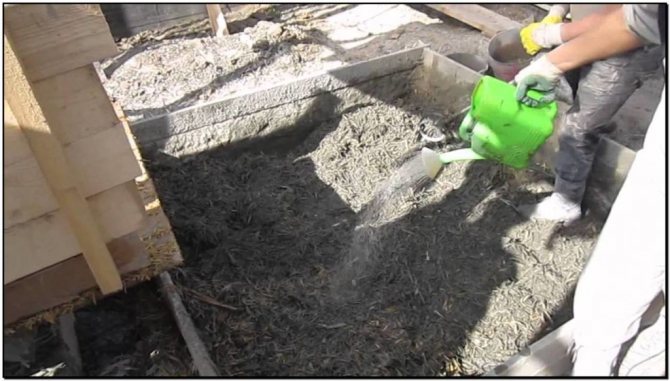

It is convenient to mix using a construction mixer or mixer. This usually takes 5-7 minutes.


The finished mixture of monolithic wood concrete is a moderately wet mass. If you take chips in your hand, then water should not flow out of it!
If a chemical additive was not introduced into the composition, but preliminary processing of the aggregate in lime was carried out, then the mixing process lasts 25 minutes so that the lime has time to be extinguished.
So you can prepare a monolithic arbolite with your own hands for subsequent pouring into the erected formwork or permanent formwork of walls and partitions, as well as pouring floors and ceilings.
Making wood concrete at home
Arbolit is a building material unique in its kind, which has a simple composition. Abroad, houses from wood concrete have been built for a relatively long time, while in our country, this building material appeared relatively recently, only in the middle of the last century.
Houses made of wood concrete, as mentioned above, have a number of advantages, among which, especially the following should be noted:
- Excellent thermal insulation characteristics of wood concrete;
- The ability to use wood concrete blocks, both as the main building material and as a heater;
- Ease of installation and processing;
- Ecological harmlessness of wood concrete;
- Decent soundproofing properties and affordable cost.
It is possible to list the advantages of wood concrete for a long time, but in particular I would like to note the simplicity of making this building material at home.
The wood concrete house can be easily finished after construction, although there are still some nuances when plastering wood concrete.
Wood concrete composition
Making wood concrete at home is a fairly simple event. Portland cement acts as the main binder. It is important to pay attention to the brand of cement, since for the manufacture of wood concrete blocks, cement needs grades of either 400 or 500.
The consumption of cement for the manufacture of wood concrete strongly depends on the filler used, which can be various woodworking wastes. Typically, these are shavings of softwood such as pine and spruce. Also for the manufacture of wood concrete, chips of birch, poplar, aspen or beech can be used.
And, as practice shows, the consumption of cement in the manufacture of wood concrete blocks can be determined as follows: to make one cubic meter of wood concrete blocks M15, you need to approximately consume about 250 kg of Portland cement.
In addition to cement and wood filler, chemical additives are an important component in the manufacture of wood concrete at home. Lime, calcium (chloride), instant glass and aluminum sulfate are used as chemical additives in wood concrete.
Chemical additives in the composition of wood concrete are needed in order to prevent the development of undesirable microorganisms in the filler, as well as to use it without any aging.
The proportions of chemical additives in wood concrete entirely depend on the total weight of cement, but rarely reach more than 4%. Before using them, most of the chemical additives in the wood concrete are dissolved in water, which is then used to mix the wood concrete mixture.
Manufacturing technology
The production of sawdust concrete blocks consists of the following stages:
- first, the wood chips are sieved through a coarse sieve. Chips should be 30-150 mm long and at least 5 mm wide;


sawdust must be processed before use: remove sucrose from them, which adversely affects strength.
For this, a special chemical reagent based on calcium chloride is added at the factory. When making with your own hands, you can use a solution of quicklime or leave the sawdust in the fresh air for 40-80 days;
- after drying, the shavings should be sieved again through a sieve to remove debris and soil residues;


the finished sawdust is mixed with cement in a mold, which must be constantly in a state of vibration. Then water and liquid glass are added. The whole mixture is mixed in a concrete mixer. Usually the proportions are as follows: six bags of sawdust, one bag of cement, and two bags of sand. To prevent the material from sticking to the walls, they are sheathed with linoleum;- after mixing, the mixture is poured into a mold for pressing. In this case, the mixture is reduced in size by 30%;
- blocks in formwork are kept for three days, then the formwork is removed. Then they are kept indoors at a temperature of at least 15 degrees for another 10 days, and after that they are ready for use.
Mixing proportions for cinder blocks
For the manufacture of blocks, slag is used in different sizes and includes several different fractions. This allows you to give the blocks a higher strength and improve thermal performance. The sifted slag of the correct size is moistened with water before starting to prepare the mixture to improve its adhesion to the cement. Proportions for the manufacture of cinder blocks:
- 1.5-2 parts of water;
- 3 parts of M400 cement;
- 2 pieces of sand;
- 7 parts of slag.
In addition to slag, brick breakage, crushed stone, ash, gravel, gypsum can be added to the mixture. To save cement, you can replace a quarter of the binder with lime. This will not degrade the quality of the finished blocks.

